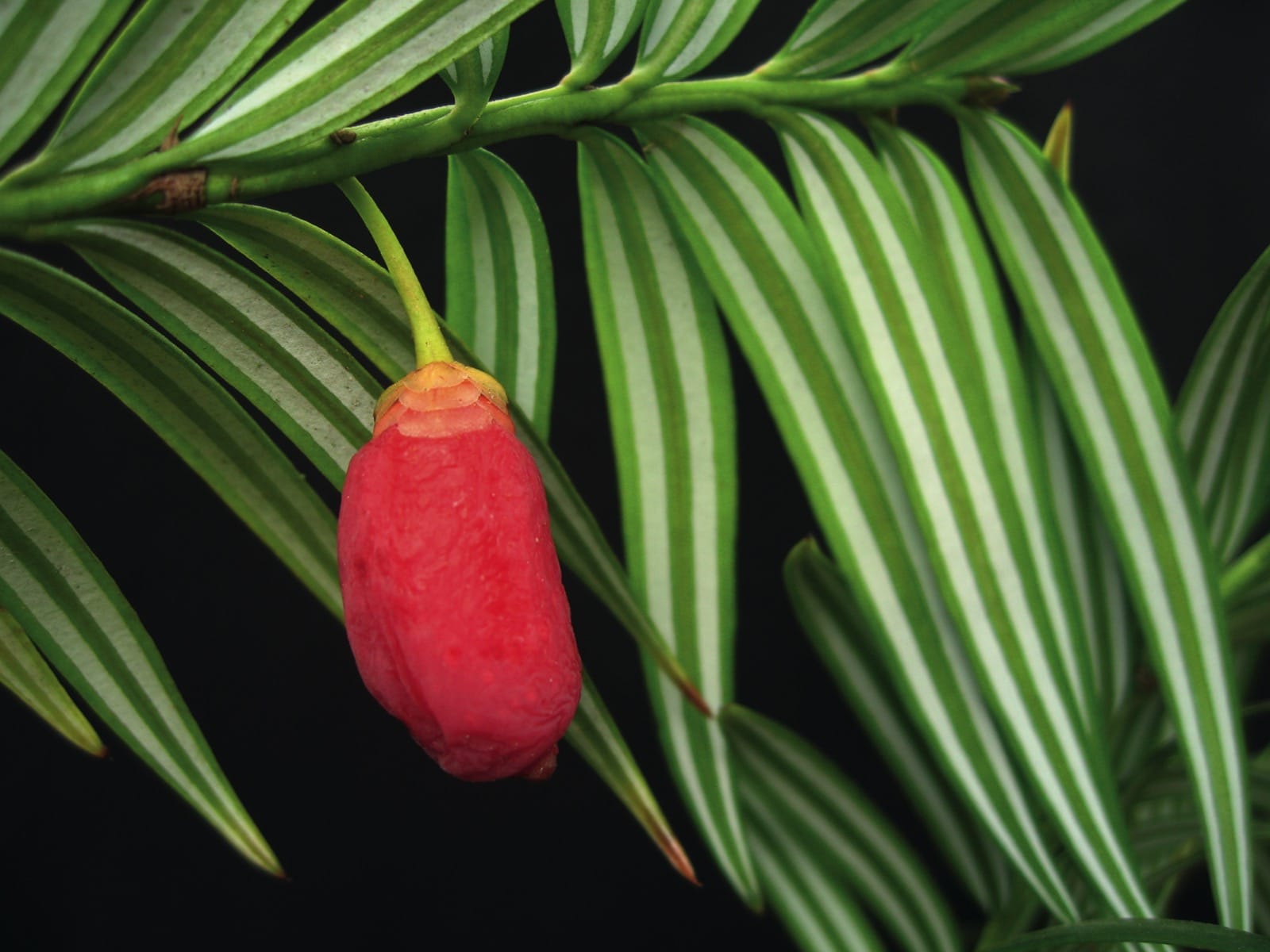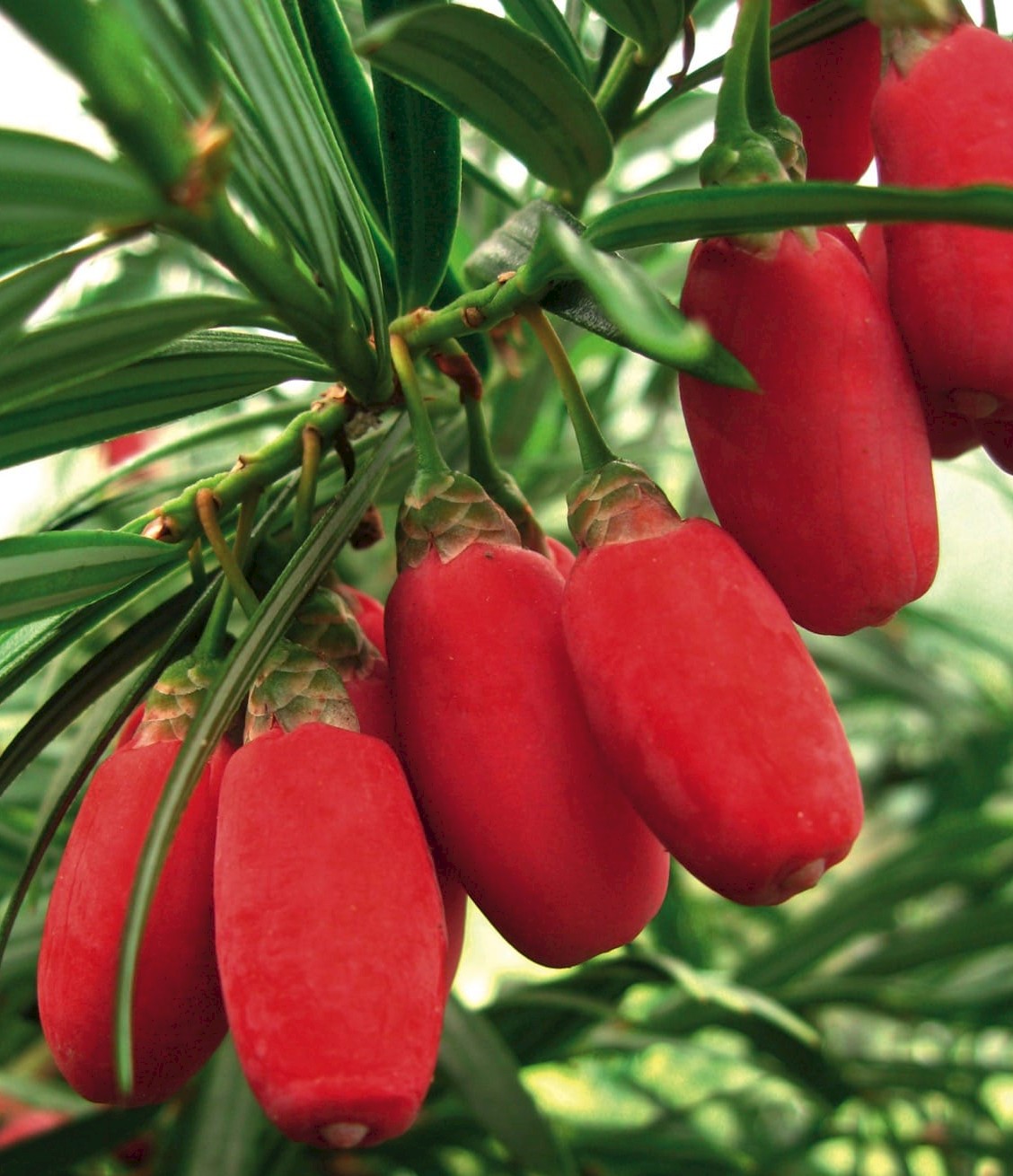Amentotaxus
Credits
Article from New Trees by John Grimshaw & Ross Bayton
Recommended citation
'Amentotaxus' from the website Trees and Shrubs Online (treesandshrubsonline.
Family
- Taxaceae
Amentotaxus comprises six species of small dioecious trees or shrubs that grow in damp forest understorey in southeastern Asia, often in ravines or along streams at altitudes of 300–1600 m. The branches are thin and spreading, producing opposite branchlets. The comparatively broad, leathery leaves are glossy dark green, and persist two or three years. They are opposite with a short petiole, usually linear-elliptic to linear-lanceolate, margins slightly revolute and with a prominent midrib between two broad and conspicuous white or fulvous stomatal bands. Although decussate in arrangement they tend to align themselves to the light and thus often appear to be held in a single plane. Male strobili are borne in terminal clusters of one to five, held erect when young but becoming pendulous with age, 3–7 cm long with 8–10 microsporophylls; the catkin-like bodies give the genus its name, which translates literally as ‘catkin yew’. Ovules are borne on peduncles 1–1.5 cm long, subtended by 10–15 persistent scales. The ovoid or ellipsoid arillate fruits are reddish yellow, becoming purple, and are resinous. They ripen and fall after one year on the tree, but it is thought that the embryo takes longer to mature and germination occurs after at least one further year. Amentotaxus is probably most closely related to Torreya, but is the only member of the Taxaceae to have resin in its ducts or canals (Li 1952, Ferguson 1992, Cope 1998).
Amentotaxus are attractive small trees, the silvery stomatal bands being their most appealing feature. They are all rather rare in the wild, threatened by habitat destruction, and very scarce in cultivation. Originating in dense under storey of sub tropical forests, at only moderate altitudes, they will require specialist conditions of shade and high humidity but as much warmth as possible. Only in exceptional conditions should these rare trees be attempted outside in our area. In addition to A. argotaenia, described below, A. formosana H.L. Li (Critically Endangered) is in cultivation in both Europe and North America, but wisely maintained under glass: one plant from Edinburgh failed to survive outside at Tregrehan (see Plate 35, p. 21). Amentotaxus yunnanensis H.L. Li (Endangered in the wild) is also tenuously in cultivation under glass, having been recently collected by an expedition to Vietnam led by Rob Nicholson, Conservatory Manager at Smith College, Massachusetts, and successfully propagated from cuttings there (Smith College 2005a).


